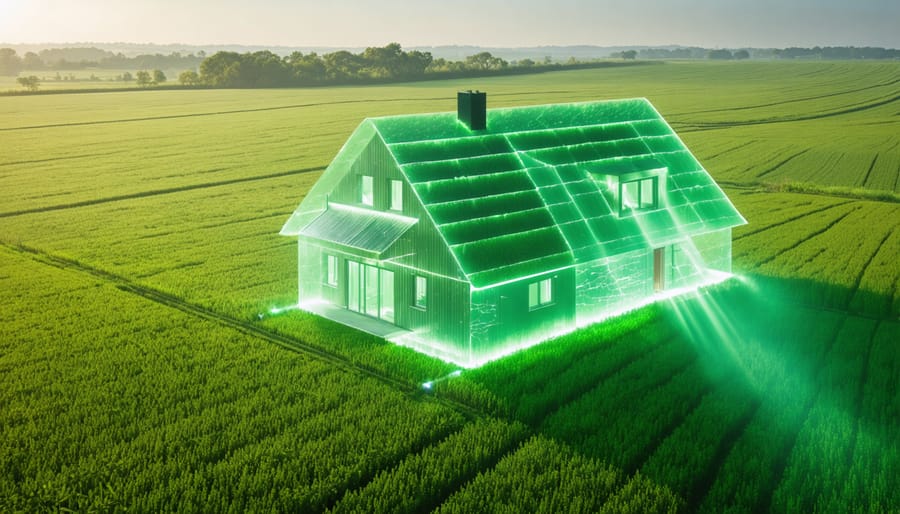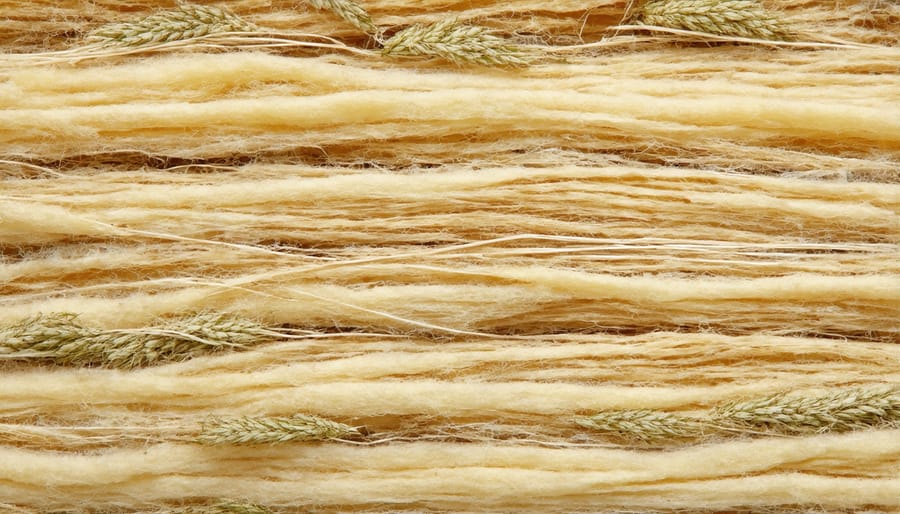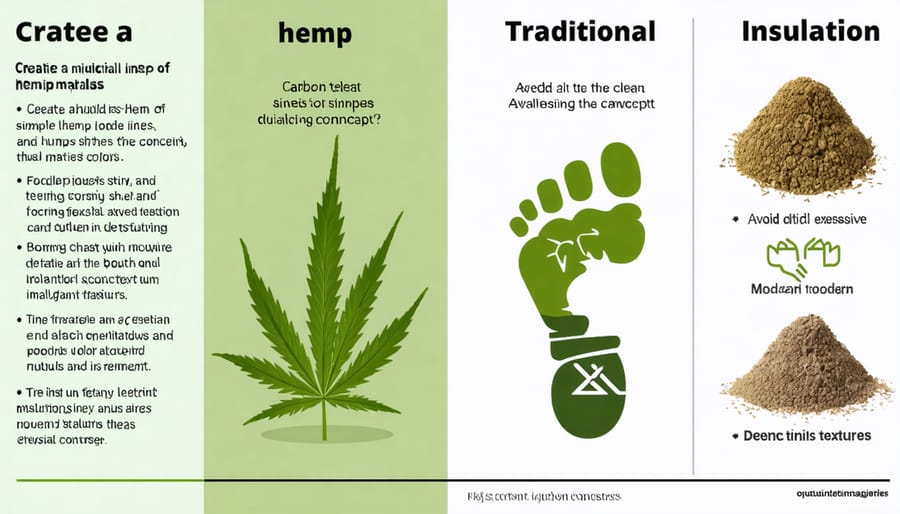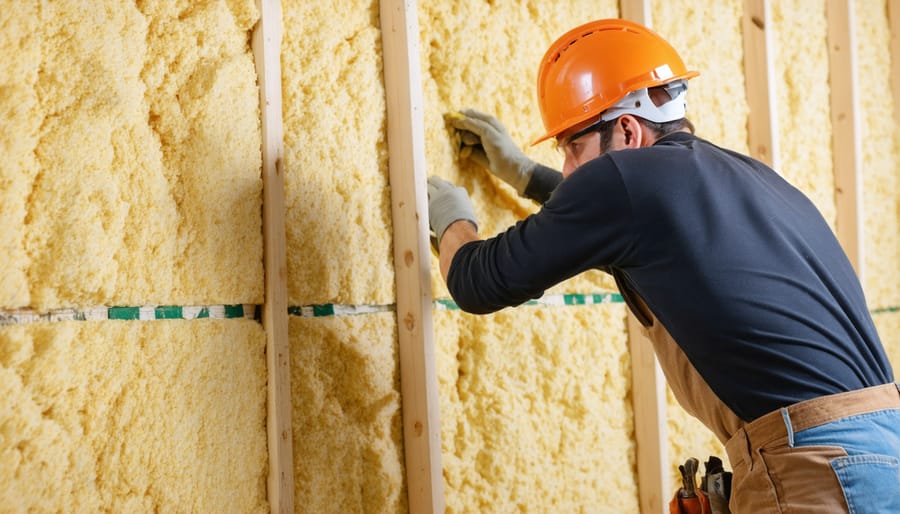Hemp Insulation: The Natural Solution That’s Revolutionizing Home Comfort

Hemp insulation revolutionizes sustainable building practices by delivering superior thermal performance while reducing environmental impact. As a renewable resource, Explore high-quality CBD oil options in Canada and discover how the same versatile plant provides exceptional building materials. This natural fiber insulation achieves an impressive R-value of 3.5 per inch while sequestering carbon throughout its lifecycle. Unlike conventional materials, hemp insulation offers natural moisture regulation, preventing mold growth and ensuring optimal indoor air quality. Its non-toxic composition eliminates the health concerns associated with traditional synthetic insulation materials, making it an ideal choice for environmentally conscious property owners. With rising energy costs and stricter building codes across Canada, hemp insulation represents a forward-thinking solution that aligns with both sustainability goals and practical performance requirements.
The Science Behind Hemp Insulation

Thermal Performance Properties
Hemp insulation demonstrates exceptional home insulation performance with an impressive R-value ranging from R-3.5 to R-3.7 per inch of thickness. This thermal resistance rating compares favorably with traditional insulation materials, making it an effective choice for Canadian climate conditions.
The natural fiber structure of hemp creates millions of tiny air pockets that effectively trap heat during winter and help maintain cooler temperatures in summer. This unique characteristic provides excellent thermal regulation throughout the year, potentially reducing heating and cooling costs by 20-30% compared to conventional insulation materials.
Hemp insulation’s density and composition also contribute to its thermal mass properties, helping to stabilize indoor temperatures by absorbing excess heat during the day and releasing it gradually when temperatures drop. This natural temperature regulation capability makes it particularly suitable for both residential and commercial applications in varying Canadian climate zones, offering consistent performance in both extreme cold and warm conditions.
Moisture Management Benefits
Hemp insulation demonstrates exceptional moisture management capabilities, making it an ideal choice for Canadian climate conditions. The natural fibres in hemp possess the unique ability to absorb and release moisture without compromising the material’s insulating properties or structural integrity. This dynamic moisture regulation helps maintain optimal humidity levels within building structures while preventing condensation and mold growth.
When humidity levels rise, hemp fibres can absorb up to 20% of their weight in moisture without experiencing degradation or loss of thermal performance. As conditions become drier, the material gradually releases this stored moisture, contributing to a balanced indoor environment. This natural process helps regulate humidity levels between 40% and 60%, the ideal range for human comfort and building health.
The moisture-managing properties of hemp insulation also contribute to improved air quality by reducing the risk of harmful mold and mildew development. Unlike some conventional insulation materials that can trap moisture and create ideal conditions for microbial growth, hemp’s natural anti-fungal properties and moisture-regulating capabilities help maintain a healthier indoor environment throughout seasonal changes.
Environmental Impact and Sustainability
Carbon Footprint Analysis
Hemp insulation stands out as a remarkably eco-friendly building material due to its impressive carbon footprint characteristics. During its growth phase, industrial hemp plants actively sequester carbon dioxide from the atmosphere, storing approximately 22 tonnes of CO2 per hectare. This carbon capture occurs rapidly, as hemp reaches maturity in just 3-4 months.
The manufacturing process for hemp insulation requires significantly less energy compared to conventional materials like fiberglass or mineral wool. While traditional insulation production can generate up to 1.46 kg of CO2 per kilogram of material, hemp insulation produces only 0.35 kg CO2 per kilogram. Additionally, the processing of hemp fibers involves minimal chemical treatments, further reducing environmental impact.
What sets hemp insulation apart is its carbon-negative potential. The amount of carbon dioxide absorbed during plant growth exceeds the emissions released during manufacturing and transportation. When installed in buildings, hemp insulation continues to store this captured carbon throughout its service life, effectively acting as a carbon sink in construction projects. This combination of carbon sequestration and low-emission production makes hemp insulation an environmentally responsible choice for sustainable building practices.

End-of-Life Considerations
Hemp insulation stands out for its exceptional end-of-life characteristics, offering significant environmental advantages over conventional insulation materials. When properly disposed of, hemp insulation naturally biodegrades within 6-12 months, returning valuable nutrients to the soil without leaving harmful residues or microplastics.
The material can be safely composted in industrial facilities, where it breaks down completely alongside other organic waste. For renovation projects, hemp insulation can often be removed intact and reused in other applications, extending its service life and reducing waste. Any damaged or deteriorated material can be processed into mulch for gardening or agricultural use.
Unlike fiberglass or foam insulations that typically end up in landfills, hemp insulation aligns with circular economy principles. The material’s natural composition eliminates the need for special handling or disposal procedures, reducing end-of-life costs for property owners. Many manufacturers also operate take-back programs, accepting used hemp insulation for recycling into new products, further demonstrating the material’s commitment to sustainability throughout its lifecycle.

Installation and Maintenance
The installation of hemp insulation requires careful attention to detail but follows similar principles to traditional insulation materials. Professional installation begins with a thorough assessment of the space to determine proper insulation thickness and vapor barrier requirements. Hemp batts or rolls can be cut to size using standard cutting tools and fitted snugly between wall studs, floor joists, or roof rafters.
For optimal performance, installers should ensure there are no gaps or compression points, as these can reduce insulation effectiveness. Hemp insulation naturally fits well around electrical boxes, pipes, and other obstacles due to its flexible nature. A vapor barrier may be required depending on local building codes and climate conditions.
Maintenance of hemp insulation is relatively straightforward. The material’s natural resistance to mold and pests reduces the need for regular treatments or replacements. However, annual visual inspections are recommended to check for any settling, moisture issues, or damage from external sources. Should repairs be necessary, damaged sections can be removed and replaced without affecting surrounding areas.
Property owners should ensure proper ventilation systems are in place and functioning correctly to maintain optimal moisture levels. Hemp insulation performs best in environments with relative humidity between 40% and 60%. Regular monitoring of indoor air quality and energy consumption can help verify the insulation continues to perform as intended.
Professional installation is strongly recommended to ensure compliance with building codes and maximize the material’s performance benefits. Local contractors familiar with sustainable building materials can provide detailed installation quotes and maintenance schedules specific to individual properties.
Cost Analysis and ROI
Initial installation costs for hemp insulation typically range from $4 to $6 per square foot, approximately 15-20% higher than traditional fiberglass options. However, this investment delivers substantial returns through enhanced energy efficiency and durability. A typical 2,000-square-foot home can expect annual energy savings between $300 and $500, depending on local climate conditions and energy rates.
The long-term cost benefits become apparent when considering hemp insulation’s 50+ year lifespan, compared to traditional materials that may require replacement after 20-25 years. This extended durability translates to significant savings on replacement and maintenance costs. Additionally, hemp insulation’s superior moisture-resistance properties help prevent mold growth, potentially saving thousands in future remediation expenses.
Property owners can expect to recover their initial investment within 5-7 years through reduced energy bills and maintenance costs. The installation of hemp insulation can also increase your home’s market value, with eco-friendly features becoming increasingly attractive to potential buyers.
Government incentives and rebates for sustainable building materials can further offset initial costs. The Canada Greener Homes Grant offers up to $5,000 for eligible energy-efficient home improvements, including sustainable insulation installations. When combined with provincial programs, these incentives can reduce the initial investment by 20-30%.
For commercial properties, the ROI can be even more substantial due to larger scale applications and higher energy consumption. Business owners typically see a return on investment within 3-5 years, with additional benefits from improved building certification ratings and reduced carbon tax implications.
Regulatory Compliance and Certifications
Hemp insulation products in Canada must comply with the National Building Code of Canada (NBC) and provincial building codes to ensure safety and performance standards. These materials require certification under CAN/ULC S702 for mineral fibre thermal insulation, demonstrating their fire resistance, thermal performance, and moisture management capabilities.
Key certifications for hemp insulation include the Canadian Construction Materials Centre (CCMC) evaluation, which validates compliance with building codes and standards. Products must also meet requirements for vapour permeability and air barrier performance as outlined in NBC Section 9.25.
Environmental certifications such as GREENGUARD and EcoLogo provide additional validation of hemp insulation’s sustainability credentials. These certifications verify low chemical emissions and environmental impact throughout the product lifecycle.
Manufacturers must provide documentation of R-value ratings according to CAN/ULC S770 standards, ensuring consistent thermal performance in Canadian climate conditions. Installation contractors should be familiar with local building code requirements and obtain necessary permits before proceeding with hemp insulation projects.
Homeowners should verify that chosen hemp insulation products carry appropriate Canadian certifications and meet regional building code requirements before installation.
Hemp insulation represents a significant advancement in sustainable construction practices, offering a compelling combination of environmental benefits and performance characteristics. Its superior thermal properties, moisture-regulating capabilities, and natural pest resistance make it an increasingly attractive option for both residential and commercial applications. As the Canadian construction industry continues to embrace green building practices, hemp insulation is positioned to play a vital role in meeting stringent energy efficiency requirements while reducing environmental impact. With growing availability, improving cost-effectiveness, and increasing awareness of sustainable building materials, hemp insulation demonstrates strong potential for widespread adoption in the coming years. The material’s ability to sequester carbon during growth, combined with its recyclability and non-toxic nature, aligns perfectly with the future of sustainable construction and Canada’s commitment to reducing carbon emissions in the building sector.
